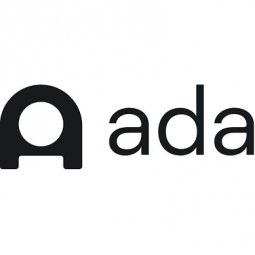下载PDF
AI-Driven Customer Service Transformation: A Case Study on Qapital
技术
- 平台即服务 (PaaS) - 应用开发平台
适用行业
- 水泥
- 金融与保险
适用功能
- 产品研发
- 销售与市场营销
用例
- 对话机器人
- 时间敏感网络
挑战
Qapital 是一项仅限移动设备的银行服务,在管理客户服务查询方面面临着重大挑战。尽管 Qapital 在 2017 年被 Google 评为“年度最具创新应用程序”,但事实证明,Qapital 对 Zendesk 实时客服人员服务客户服务的依赖是一个瓶颈。该公司经历了漫长的等待时间和不断增加的票单,这不仅让客户感到沮丧,而且也让客服人员很难专注于更复杂的问题。作为一家致力于将保守的银行业数字化的公司,Qapital 热衷于为其客户支持带来同样水平的创新。
关于客户
Qapital 是一项仅限移动设备的银行服务,于 2017 年被 Google 列为“年度最具创新应用”。该公司成立的目的是实现保守银行业的数字化,让客户能够更轻松、更直观地进行计划根据他们的个人财务目标进行投资和储蓄。随着公司的发展,它为客户节省了超过 10 亿美元。然而,它对 Zendesk 现场代理提供客户服务的依赖造成了障碍,等待时间长且票务清单不断增加。
解决方案
Qapital 决定整合一个人工智能客户服务聊天机器人来处理客户咨询。该公司与 Ada 的自动化客户体验 (ACX) 顾问合作,在短短 30 天内推出了一个 24/7 人工智能客户服务聊天机器人。该聊天机器人旨在与 Zendesk 无缝集成,在必要时提供从机器人到现场代理的平稳过渡。它还提供适合移动设备的全渠道体验。重要的是,聊天机器人可以由非技术团队管理,允许客户支持代理构建和管理聊天机器人,而无需开发人员。这使支持代理能够在需要时立即创建、添加、更新和增强内容。
运营影响
数量效益
相关案例.

Case Study
System 800xA at Indian Cement Plants
Chettinad Cement recognized that further efficiencies could be achieved in its cement manufacturing process. It looked to investing in comprehensive operational and control technologies to manage and derive productivity and energy efficiency gains from the assets on Line 2, their second plant in India.

Case Study
Real-time In-vehicle Monitoring
The telematic solution provides this vital premium-adjusting information. The solution also helps detect and deter vehicle or trailer theft – as soon as a theft occurs, monitoring personnel can alert the appropriate authorities, providing an exact location.“With more and more insurance companies and major fleet operators interested in monitoring driver behaviour on the grounds of road safety, efficient logistics and costs, the market for this type of device and associated e-business services is growing rapidly within Italy and the rest of Europe,” says Franco.“The insurance companies are especially interested in the pay-per-use and pay-as-you-drive applications while other organisations employ the technology for road user charging.”“One million vehicles in Italy currently carry such devices and forecasts indicate that the European market will increase tenfold by 2014.However, for our technology to work effectively, we needed a highly reliable wireless data network to carry the information between the vehicles and monitoring stations.”

Case Study
Safety First with Folksam
The competitiveness of the car insurance market is driving UBI growth as a means for insurance companies to differentiate their customer propositions as well as improving operational efficiency. An insurance model - usage-based insurance ("UBI") - offers possibilities for insurers to do more efficient market segmentation and accurate risk assessment and pricing. Insurers require an IoT solution for the purpose of data collection and performance analysis

Case Study
Smooth Transition to Energy Savings
The building was equipped with four end-of-life Trane water cooled chillers, located in the basement. Johnson Controls installed four York water cooled centrifugal chillers with unit mounted variable speed drives and a total installed cooling capacity of 6,8 MW. Each chiller has a capacity of 1,6 MW (variable to 1.9MW depending upon condenser water temperatures). Johnson Controls needed to design the equipment in such way that it would fit the dimensional constraints of the existing plant area and plant access route but also the specific performance requirements of the client. Morgan Stanley required the chiller plant to match the building load profile, turn down to match the low load requirement when needed and provide an improvement in the Energy Efficiency Ratio across the entire operating range. Other requirements were a reduction in the chiller noise level to improve the working environment in the plant room and a wide operating envelope coupled with intelligent controls to allow possible variation in both flow rate and temperature. The latter was needed to leverage increased capacity from a reduced number of machines during the different installation phases and allow future enhancement to a variable primary flow system.

Case Study
Automated Pallet Labeling Solution for SPR Packaging
SPR Packaging, an American supplier of packaging solutions, was in search of an automated pallet labeling solution that could meet their immediate and future needs. They aimed to equip their lines with automatic printer applicators, but also required a solution that could interface with their accounting software. The challenge was to find a system that could read a 2D code on pallets at the stretch wrapper, track the pallet, and flag any pallets with unread barcodes for inspection. The pallets could be single or double stacked, and the system needed to be able to differentiate between the two. SPR Packaging sought a system integrator with extensive experience in advanced printing and tracking solutions to provide a complete traceability system.






